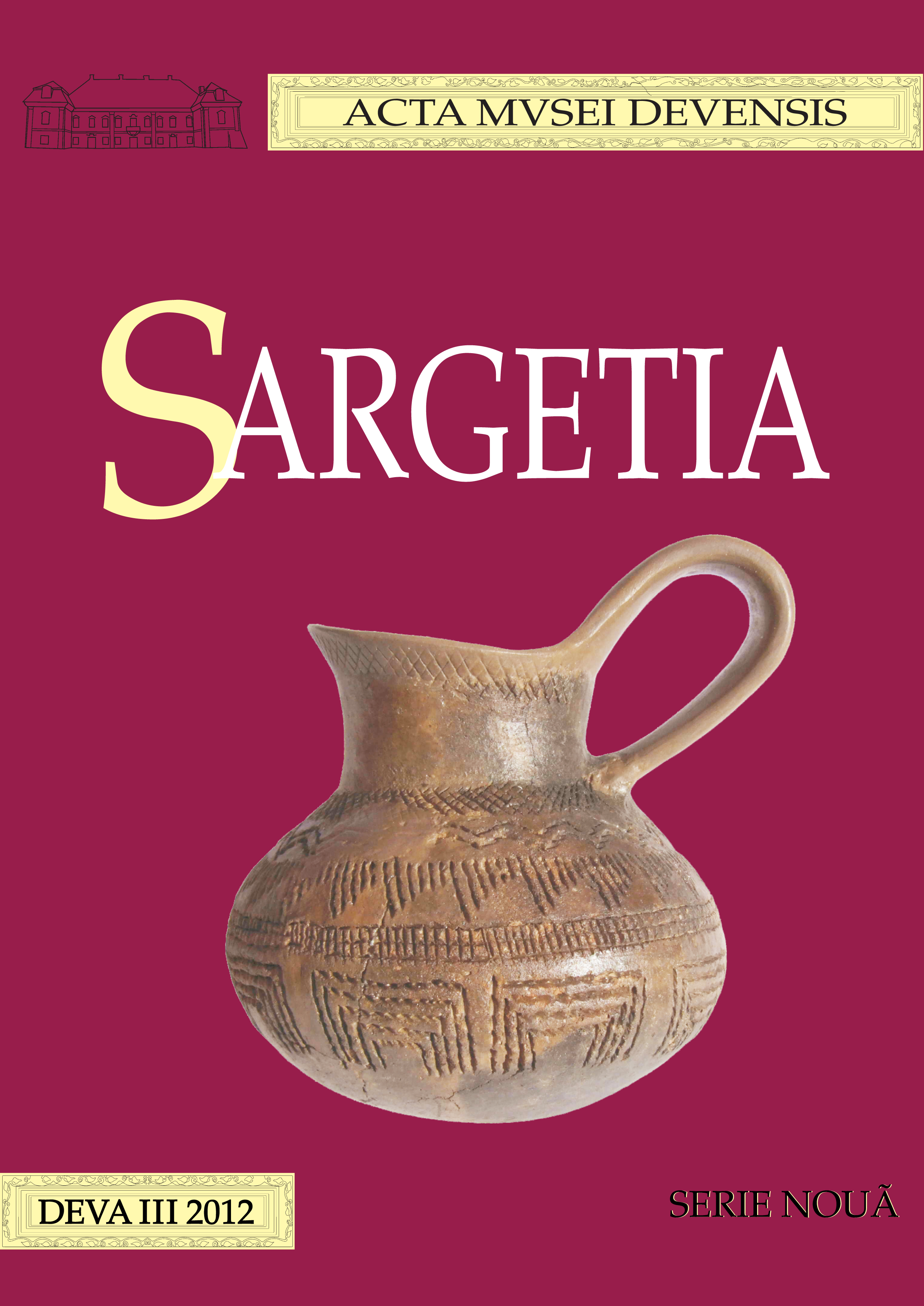Consideraţii cu privire la „capetele de băţ” din cultura Wietenberg
Considerations regarding the ”stick-heads” from the Wietenberg culture
Author(s): Antoniu Tudor MarcSubject(s): Archaeology
Published by: Editura Altip
Keywords: highway; Şoimuş; Bronze Age; Wietenberg Culture; ”stick-head”
Summary/Abstract: During 2011, were conducted preventive archaeological researches in several points, situated on the highway route, which will cross the Hunedoara County, along the Mureş Corridor (Note 1). Among many sites, belonging to all past epochs, there were investigated some Middle and Late Bronze Age settlements. One of these refers to the Şoimuş – “Teleghi” site (Note 2 and 4), where was unveiled the southern edge of the settlements here (Note 5). It is on a high terrace of the Mureş River on its right side, a short distance from the stream (Pl. I). The Bronze Age settlement lasted probably from the end of MBA, until the beginning of the first Iron Age. The archaeological materials are integrated to phase III-IV of Wietenberg Culture, but also to a later cultural horizon, characterized by influences from Banat and Crişana, specific to transition from Bronze Age to Iron Age, in these areas. Most of investigated complexes were different destinations pits (supplies, waste, votive, funerary), containing a lot of archaeological materials, only few dwellings being found. Among the many recovered objects, are the so called “stick-heads”, 10 pieces, specific ceramic products of Wietenberg Culture, but also present in others contemporary cultures area (Note 6). The “stick-heads” are small dimensions ceramic objects (3-6 cm diameter), with non-pierced axial hole, the body having spheroid, ellipsoidal, biconical or conical form and cylindrical form sleeve. Some of these were produced without sleeve. The hole has a 0.5-1 cm diameter, usually exceeding in depth, the center of the object. A stick was most probably introduced in it, so that these objects have received conventional general name which bears (Note 7). Our 10 pieces (Pl. II, III) were recovered from the same number of complexes – supplies pits become, in most cases, waste pits and, in one case, of a possible hut. These were kept intact, except one, chipped on the hole and the side. Typologically may fall into types I, IIa, IIb, IId, IVa and V (Note 12), only one piece being a separate form. Four of these are decorated on the maximum diameter, three by oblique channeling and one by impressions, two of these being decorated with incised ornaments around the sleeve and one with impressions on the edge of it (Pl. II). In a first step of historiography, these items were considered spindle-whorls (Note 13). With the entry into literature the term "stick-head", its utility destination has become relative, so it not opted for a more specific appointment (Note 14). Anyway, it was excluded the possibility to be used as spindle-whorls, due to the form of the objects and the hole is not pierced (Note 15), but it was admitted the utility in domestic activities (Note 16). Still, the problem of "stick-heads" utility has not been solved, it only being advanced some hypotheses. My consideration is that these objects are spindle-whorls, based on the following arguments: the found context from our research indicates that these were common objects and at one moment, became useless, being thrown into a waste pit; the form of these pieces (Note 19) are similar, in many cases, with those of spindle-whorls (Note 20); also, there are almost identical form of spindle-whorls in the contemporary neighboring cultural area (Note 21); in most cases, the disposing ornament (Note 18) plead for an up position sleeve, toward the user view (it is well known that the spindle is most frequently used suspended with the spindle-whorl down); its dimensions and weight are sufficient to ensure proper rotation inertia and balance of a spindle. One more argument is the case of the "stick-head" found in the grave 6 from the cremation cemetery at Bistriţa – “Cetate”, of Wietenberg Culture (Note 22). It was part of the funerary inventory, being in the pot urn, with cinerary remains of the deceased. I see its presence there as part of a spindle deposited near dead child, meaning the early breaking of the "thread of life" (Note 23). From those shown above, I consider that the utility of the "stick-heads" are spindle-whorls, being part of the spindle assembly. This could also explain the absence of the spindle-whorls with pierced hole, in our finds of the site, otherwise habitual of any inventory of ancient settlements.
Journal: Sargetia. Acta Musei Devensis
- Issue Year: 2012
- Issue No: 3
- Page Range: 91-100
- Page Count: 10
- Language: English, Romanian

